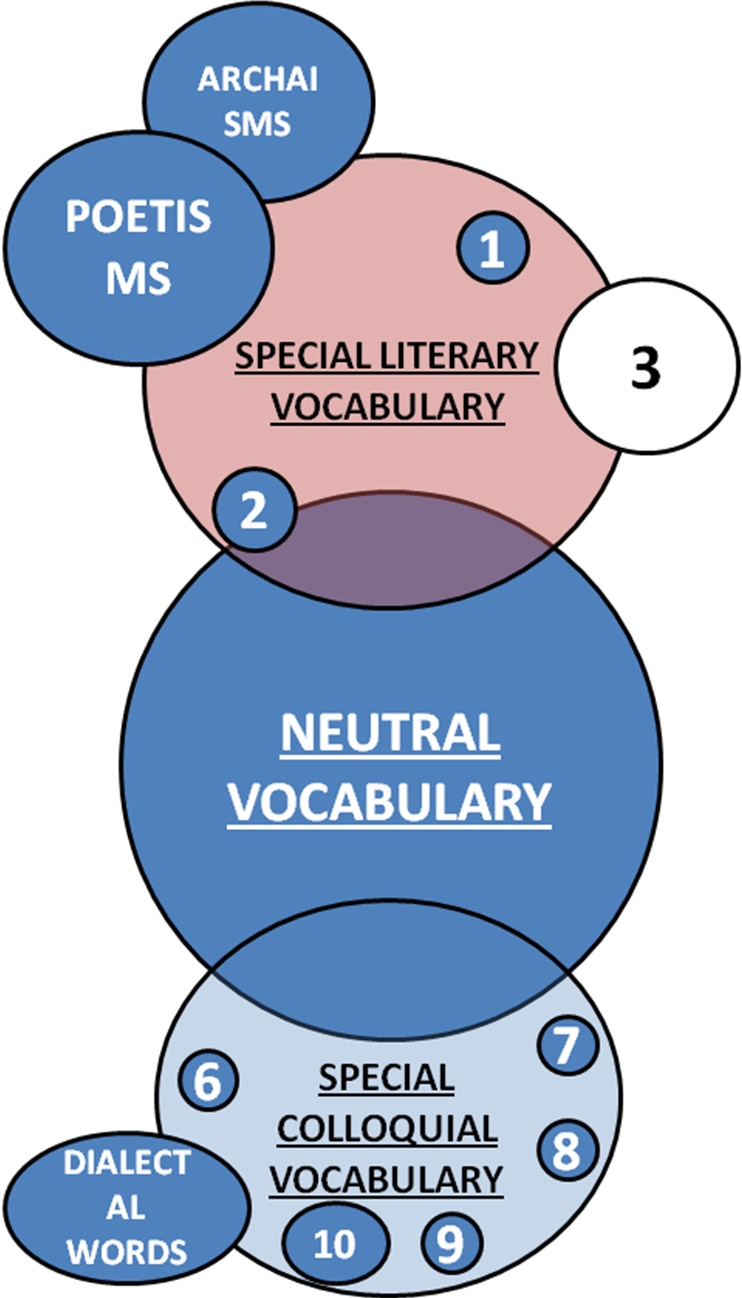
- •Lecture 1.1 General Problems of Style and Stylistics
- •Lecture 1.2 Modern English from the Viewpoint of Syntagmatic Stylistics
- •Interrelations among different word strata:
- •Legend:
- •Norm in Stylistics. Paradigmatic and Syntagmatic Stylistics
- •Neutrality and Norm in Stylistics
- •Paradigmatic and Syntagmatic Stylistics
- •Module II. Lexical Expressive Means and Devices (Figures of Thought) Lecture 2.1 Types of Meaning in an Utterance. Devices Based on the Interaction of Logical and Contextual Meanings
- •Devices Based on the Interaction of Logical and Contextual Meanings
- •Devices Based on the Interaction of Logical and Emotive Meanings
- •Lecture 2.3 Devices Based on the Interaction of Primary and Derivative Logical Meanings. Devices Giving Additional Characteristics to the Objects Described
- •Devices Giving Additional Characteristics to the Objects Described
- •Lecture 2.4 Stylistic Use of Set Expressions and Allusions. Stylistic Use Of Synonyms
- •Stylistic use of Proverbs and Sayings
- •Stylistic Use of Synonyms
- •Module III. Syntactical Stylistic Means and Devices (Figures of Speech) Lecture 3.1 Inversion. Detachment. Ellipsis. Aposiopesis. Parallelism. Chiasmus. Apochoinu
- •Lecture 3.2 Suspense. Rhetorical Question. Suspense. Rhetorical Question. Repetitions. Tautological Subject. Climax. Anticlimax. Antithesis
- •Module IV. Phonetic Expressive Means and Stylistic Devices Lecture 4.1 Euphony. Alliteration. Assonance. Onomatopoeia. Onomatopoeia. Metre. Rhythm. Rhyme
- •Module V. Functional Styles of the English Language Lecture 5.1 The Notion of a Functional Style. Scientific Prose Style. The Style of Official Documents
- •Lecture 5.2 Publicistic Style. The Style of Newspapers. Belle-Lettre
Interrelations among different word strata:

Legend:
1. Nonce-words 2. Terms 3. Foreign words, barbarisms 4. Common literary vocabulary 5. Special colloquial vocabulary |
6. Professionalism 7. Nonce-words 8. Vulgarisms 9. Jargon 10. Slang |
Lecture 1.4 Stylistic Colouring and Stylistic Neutrality. Neutrality and
Norm in Stylistics. Paradigmatic and Syntagmatic Stylistics
The essence of stylistic perception of any utterance or text consists in mental confrontation of what one hears or reads with what one knows, that is with one’s previous linguistic experience. To understand a message adequately does not only mean to decipher the senses of separate linguistic units, such as words, morphemes and their combinations, and to put these senses together. It also means to undertake an immediate evaluation of such units from the standpoint of their belonging to either the neutral sphere or stylistically marked/stylistically coloured sphere of the language. The stylistic colouring means the knowledge where, i.e. in what particular type of communication, this or that unit is current. Besides, both the stylistic colouring and neutrality of units may be viewed as a result of their distributional capacities. Under the distributional capacities of the units we mean the possibilities of the given unit to naturally enter combinations with its immediate environment. For example, the form haven’t has nearly a universal distribution while the form ain’t belongs to colloquial, uncultivated speech. This fact is proved by other breaches of well-established rules of grammar such as the use of several negations in one sentence. For example, I ain’t never done nothing.
Stylistically coloured units can be further subdivided into:
bookish;
solemn;
poetic;
official.
And, on the other hand:
colloquial;
rustic;
dialectal;
vulgar.
The colouring shows where the unit was coined, where it is being used and where it should not. Does this mean that unlike stylistically coloured units those stylistically neutral are devoid of any connotations? The answer should be no. However the connotations of the stylistically neutral units are innumerable and manifold because such units are used in practically every sphere of possible combinations. For example, the words water, land, husband and many others are stylistically neutral. As a result the connotation of such words becomes indefinite or neutral.
Neutrality and Norm in Stylistics
A number of scholars conclude that style may also be defined as a standardized deviation from the lingual norm. Anything stylistically conspicuous, relevant, coloured is, as they say, a departure from the norm. This is a viewpoint shared by Riffaterre, E. Supporta, M. Halliday, etc. This way they equalise the notions of stylistic neutrality and linguistic norm. What is meant by the notion of the lingual norm? It, of course, implies some pre-established and conventionally accepted parameters of what is evaluated. Thus the sentence I’ve not ever done anything satisfies to the modern English literary norm. Another example I ain’t never done nothing is certainly a deviation from the literary norm named Standard English but at the same time it fully conforms to the requirements of uncultivated English because the people who use this type of the language simply have their own norms of communication. Thus the number of norms is great and stays in accord with the number of sublanguages within one national language. Otherwise we would be obliged to consider normal only ABC-books or the texts of the first lesson for foreigners. Anything else, for example, Shakespeare, Hemingway, Fowls, Joyce, scientific and technical literature, documents, advertisements, everyday colloquial speech, would be considered abnormal. That’s why the notions of neutrality and norm should not be confused together. The basic characteristic feature of norm in language is its plurality because there has never been and cannot be one universal norm for everybody.
